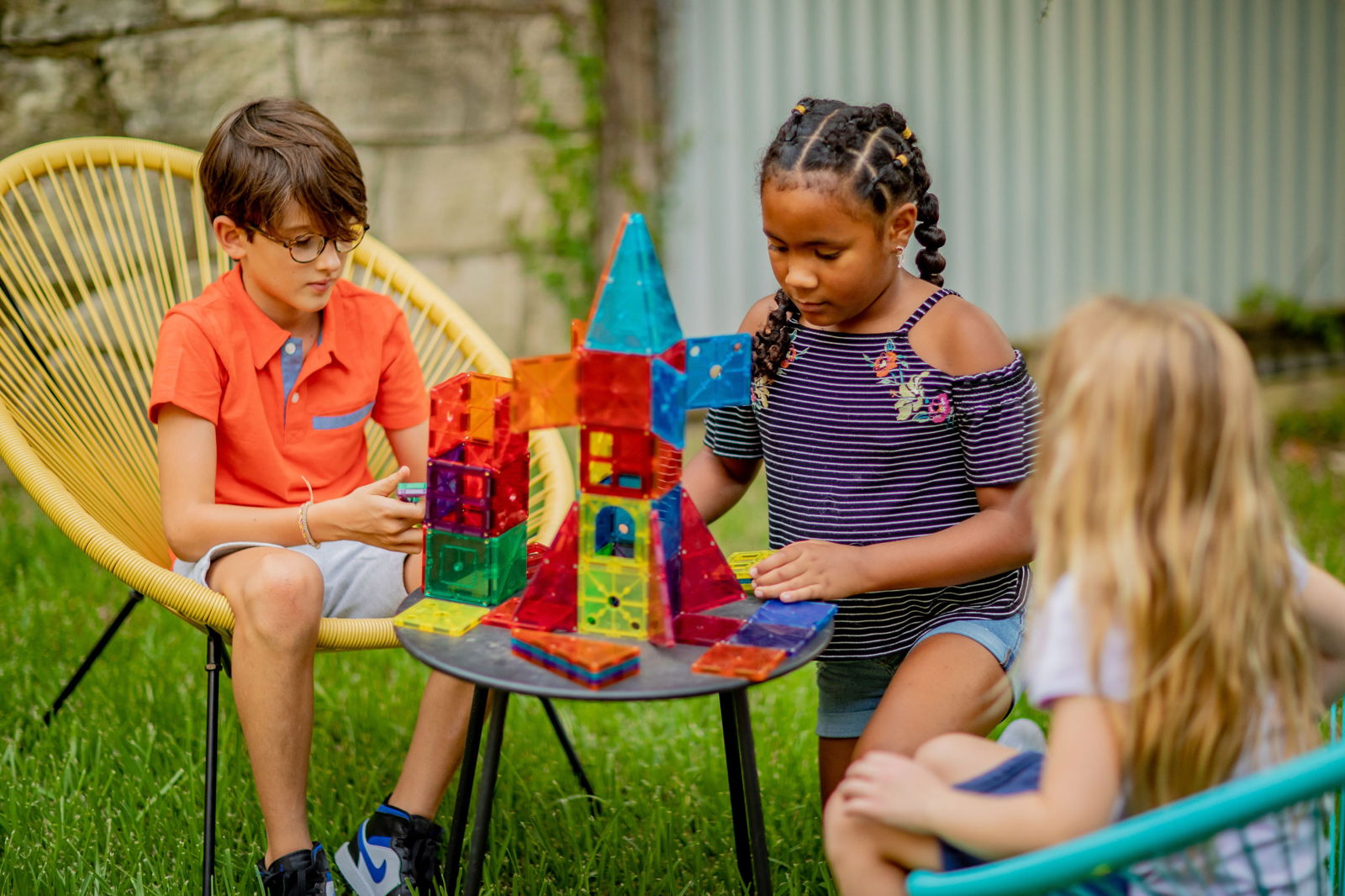The 6 Best Ways to Use Tech to Inspire Learning
Does your kiddo want to spend all day, every day on their devices?
This is a common struggle in many households. And while we recognize the importance of regulating screen time, your child’s draw to technology can actually be used for a lot of learning and skill building.
Tech is driving the future. And your child can learn and practice important science, math, and tech skills right on their tablets. Or in their playroom.
Here are some of the best ways to use technology to bring more learning to your child’s day.
6+ Ways to Boost Your Child’s Learning with Technology
Yes, the list only goes to 6. But if you dig into each section, you’ll discover details, suggestions, and products to help you maximize your child’s learning.
Let’s go!
1. Play Apps and Games
Whether they’re deemed educational or not, fun apps and video games are great for all kinds of learning. There’s even a whole category of homeschooling focused on learning through gameplay!
You can explore apps like Prodigy to help your child level up their math skills. Or encourage them to play the gamified learning app Duolingo to master another language.
But even if your child refuses all the learning apps (we certainly know some of those kids), you can still encourage better screen time with Kinjo! Kinjo brings more learning to the kid-favorite platform Roblox by encouraging your child to play the more complex, skill-building games. It’s Roblox, but better.
Want to discover how Roblox, and video games in general, can actually boost your child’s learning? Explore this topic in depth on our blog!
2. Explore Hands-On STEM Activities
Still not sure about loading up on screen time? No worries — plenty of tech activities can be done without screens!
Think about it — you use tech in all its various forms every day. From the toaster to your phone, you’re interacting with what was once brand-new and innovative technology all the time. And exploring and understanding these basics is an important step in creating even better innovations in the future.
Need some ideas for screen-free STEM activities? Give these a go!
- Build a powered Lego STEM set
- Code and create with a Cubit kit
- Plan and complete a computer build together
- Explore how circuits work with a Squishy Circuits kit
- Try a STEM-focused subscription box like Kiwi Crate
There are loads of ways to bring more tech to your day without screens!

Hands-on building is a great way to practice STEM skills.
3. Discover Coding Courses
If your child has a particular interest in computers or video games, you may want to sign them up for a coding course! This has been a popular extracurricular in the last few years. And now there are all kinds of online and in-person coding classes available for kids of all ages.
You can find free courses or paid, self-paced or teacher-directed. Depending on your child’s interest level (and attention span) they can try a quick drop-in class all about Minecraft on Outschool. Or jump straight into a full semester’s worth of programming with Codakid.
And then you can never go wrong with the wealth of information (all for free!) inside Khan Academy.
4. Try Interest-Based Online Classes
Have you ever realized just how much is available to learn online? It’s crazy the amount of information anyone with a computer can access. From crochet to plumbing, advanced math to the American Revolution — you can find a course online.
So, if your child has fallen down a rabbit hole you know little to nothing about, encourage them to explore it online. Google is one of the most powerful tools anyone has.
Before you send them on their way, double-check your search and safety settings, or guide them along their learning journey. Point them towards Khan Academy, or look for paid resources together.
Whether it’s a one-off, 30-minute class or a whole semester of learning, they can pursue their passions with others who share their interests online.
5. Don’t Forget About TV
Yes, TV can be a total time-waster (even if its an incredibly enjoyable one). And maybe more screen time is not the answer you’re looking for. But there is a ton of learning happening when you watch shows and movies.
You can explore early childhood educational content, like PBS Kids’ animal show Wild Kratts or the social-emotional learning staple Daniel Tiger’s Neighborhood. You can have a family movie night full of David Attenborough nature documentaries. Or explore some fun history lessons with The Who Was? Show.
But even non-educational programs can help your child learn. There have been some amazing Shakespearean and Austen movie adaptations in the last few decades that can help decode complex prose (remember 10 Things I Hate About You and Clueless?). And there are many shows and movies based on historical events that your child will find far more interesting than a textbook (hello Hamilton).
Has your older child taken an interest in horror films? Then they’ve been introduced to loads of skills — like visual fx, makeup, editing, storytelling, costuming, and so much more!
And then, we can’t talk TV without mentioning YouTube. Have a math question? YouTube likely has a great video to answer it. Want to learn more about solar energy, the state of Kentucky, or airplane travel? Yep, those are all there too. YouTube is a goldmine of educational content (with the right supervision, of course).
And if your child comes to you wanting to start a YouTube channel, take a beat before saying no and think about all the practical, entrepreneurial learning that can come from that endeavor. Film production, editing, voicework, digital marketing, finances, and so much more can be learned from a YouTube project.
TL;DR — you can learn A LOT from your TV.

TV time can be both family time and learning time.
6. Build or Create with DIY Projects
Tech is not just computers and screen time devices. Repairing an engine, fixing a fuse, or growing a hydroponic garden are all examples of real-life tech learning.
There are so many everyday innovations driven by technology and a desire to make things better or easier. And you can explore these with your child.
- How does a dryer work? How much energy does it use? And how much time does it save?
- What are the pros and cons of an electric vs a gas stove? Is one better for the environment? What other options are there? How would you make it better?
- How many parts make up a car engine? What happens when one breaks? What role does each part play?
Encouraging your to child examine the ins and outs of daily life can help them see the impact one new idea can make on the world. So fall down those rabbit holes and explore together.
Kinjo Can Guide Your Child to Better Tech (and learning) Time
If technology gives you pause, we totally get it. Yes, there’s a lot to watch out for and navigate. But there’s also so much learning to experience. And the more exposure your child has to technology and the skills it can build, the better prepared they’ll be for the future.
Is your child a gamer? Let Kinjo help you both navigate the world of Roblox! Roblox is a huge platform full of millions of games. And while many of these games are great for learning, others on the platform are not.
Kinjo helps your child find the best Roblox games. And then encourages them to continue playing these more complex learning challenges with awesome rewards — like Robux!
And as a Kinjo parent, you have the option to sign up for Kinjo Parent Insights — our weekly email subscription recapping your child’s Roblox gameplay and learning. It’s the best way to stay in the loop and up to date with your child’s favorite pastime.
Explore Kinjo and all we have to offer here and enjoy better (tech) learning today!








